Matador Network's Blog, page 2267
May 27, 2014
40 most scenic beaches worldwide
Summer is coming, and that means beach weekends. I realize there are some people out there who don’t go to the beach every summer, and those people are why we fight mental illness. For the rest of us, the only thing holding us over for the rest of the year is beach porn.
This is the worst time of year for me, the time just a month or two before the vacation where I’m not quite close enough to start a countdown, but I am close enough to be daydreaming about spending all day on the beach, beer in hand.
In service to anyone else who’s getting close to their beach vacation, but isn’t quite close enough, here are some of the most beautiful beaches in the world. 

1
Colombier Beach
On an island known for its beaches, Colombier Beach on St. Barths stands out. It’s the only one you can’t get to by car—you’ve gotta hike or sail.
(via)

2
Shi Shi Beach
Olympic National Park on the Pacific coast of Washington is the home to Shi Shi Beach, and one of the most beautiful sunsets of all time.
(via)

3
Ko Phi Phi Leh
Ko Phi Phi Leh is the beach they set the movie The Beach at, and the location scouts picked it for a good reason. The Phi Phi Islands in Thailand, near Phuket, were seriously messed up after the 2004 tsunami, but have made a comeback.
(via)

See more like this: 40 of the most photogenic coastlines in the world

4
Bocas del Toro
Bocas del Toro is a tourist town on Colon Island in Panama. It’s situated along the Caribbean coast and apparently has sunrises that match those in The Lion King.
(via)

5
Tulum Beach
Tulum was a walled port-city for the Mayans in what is now the Mexican state of Quintana Roo—also the home to Playa del Carmen and Cancun.
(via)
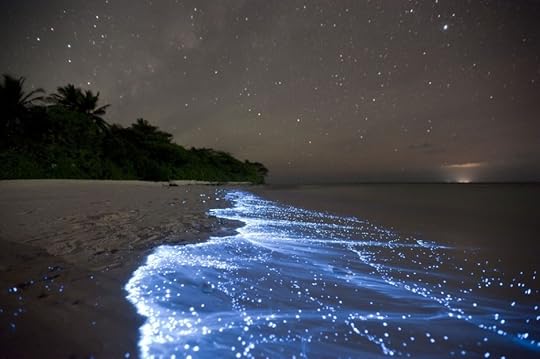
6
Sea of Stars
If you go to the Sea of Stars on Vaadhoo Island in the Maldives archipelago at night, you’ll see this other-worldly bioluminescence effect, caused by glowing phytoplankton.
(via)

7
Lanikai Beach
Though only a half-mile long, Lanikai Beach on Oahu in Hawai’i is consistently ranked one of the most beautiful beaches in the world. It’s known for its moonrises over the Mokulua Islands—the two tiny islands in the picture above.
(via)

8
Matira Point
Matira Point lies on the island of Bora Bora in French Polynesia, and is known for its over-the-water bungalows.
(via)
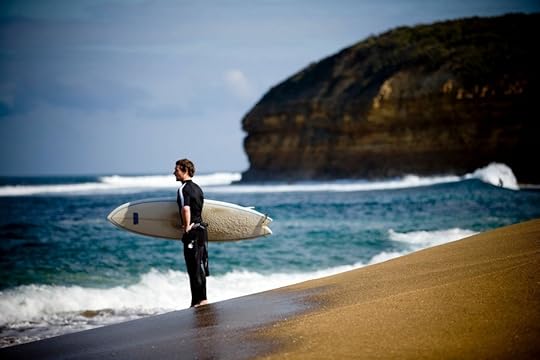
9
Bell’s Beach
Bell’s Beach in Victoria, Australia, draws surfers from around the world. It hosts the Rip Curl surfing competition each year.
(via)
Intermission

27 brilliant images of white sand beaches worldwide

25 reasons to visit the Canary Islands [pics]

30 of the world’s most beautiful bridges [PICs]

10
Anse Source d’Argent
On the Seychelles island of La Digue, Anse Source d’Argent is somewhat hard to get to despite being on a fairly populated island. This means it’s usually empty, and that it’s full of rare birds and tortoises.
(via)

11
Whitehaven Beach
Australia’s Whitsunday Island is home to the stunningly beautiful Whitehaven Beach, which has incredibly fine white sand. It is one of the cleanest beaches in Australia.
(via)

12
Pantai Cenang
The Malaysian island of Langkawi has got some pretty amazing beaches, which is why it’s a hub for travelers and expats.
(via)

13
Mustique
Mustique is an island privately owned by the Mustique resort in St. Vincent and the Grenadines. It’s a favorite spot for the Royal Family of the UK.
(via)

14
Baia dos Porcos
Baia dos Porcos is in the Fernando de Noronha archipelago off the northeast coast of Brazil. It’s beautiful, and it’s not a particularly crowded beach. Yet.
(via)

15
Malpais
Malpais Beach in Costa Rica is scenic but also remote. Perhaps for this reason, it’s become a popular location for celebrities like Mel Gibson and Gisele Bundchen looking for a getaway.
(via)
Intermission
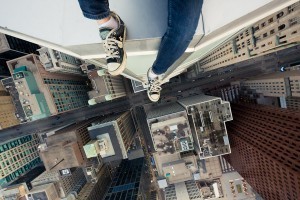
21 examples of you-fall-you-die photography with the world’s most insane skywalkers

40 of the most creative custom bikes on the road [pics]

89 of the world’s most mind-bending 3D chalk drawings

16
Railay
Probably number one on the “I must go to this beach” for me on this list, and also my vote for the most beautiful beach in the world, Railay, in southern Thailand, is only accessible by boat due to the surrounding cliffs.
(via)

17
Big Sur
California’s scenic Big Sur region has a number of great beaches. Some of them are not open to the public to protect the habitat, but others are popular surfing areas.
(via)

18
Barra da Lagoa
Barra da Lagoa is a small fishing community near Florianopolis in southern Brazil. It’s a great surfing village because the water is rock-free, there are no sharks, and it has relatively shallow water.
(via)
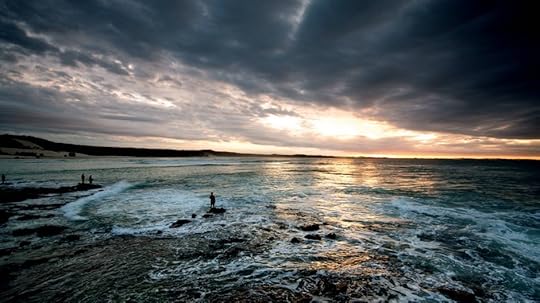
19
Fraser Island
Located in Queensland, Australia, the world’s largest sand island has a 75-mile-long beach on its east coast, which is used both as a landing strip and a highway by residents. Airplanes have right-of-way.
(via)

20
Camps Bay
Camps Bay in Cape Town, South Africa, is the best beach I’ve ever been to. It sits on the edge of an affluent suburb of Cape Town, and has awesome views of both Table Mountain and the Lion’s Head.
(via)
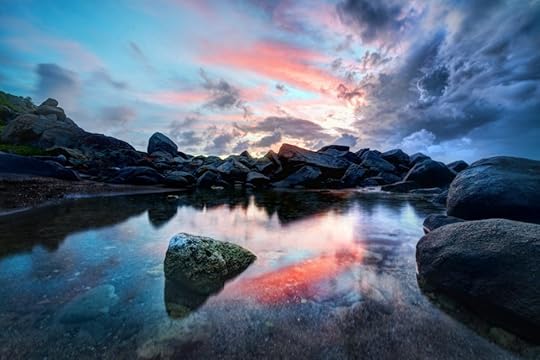
21
The Baths
The Baths on Virgin Gorda are named after large granite boulders that create little grottoes, alcoves, and tunnels that fill up with the tides.
(via)
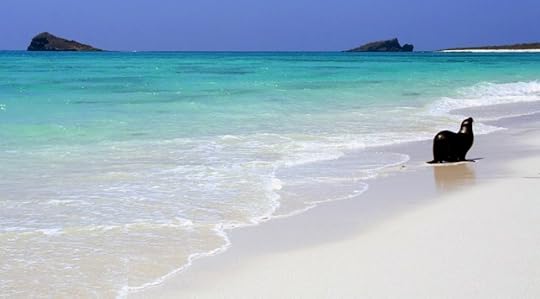
22
Bahia Gardner
Bahia Gardner on the Galapagos Island of Espanola is known for its wildlife, including seals, marine iguanas, and many rare birds.
(via)

23
Cancun
Though most famous for its party and Spring Break atmosphere, Cancun has a lot of really great beaches as well.
(via)

24
Assateague
Assateague is an island off the coast of Maryland and Virginia. The beach (and the rest of the island) is known for its wild pony population.
(via)

25
Madaket Beach
Madaket sits on Nantucket Island, which is just south of Cape Cod, Massachusetts. And yes, this is a real sunset there.
(via)

26
Anakena
Anakena is part of the archipelago of Rapa Nui—better known as Easter Island—off the coast of Chile.
(via)

27
Dyrholaey
Dyrholaey is a promontory near the village of Vik in Iceland, close to the southernmost tip of the island.
(via)

28
Wharariki Beach
On the northern tip of the south island of New Zealand, Wharariki Beach is incredibly windy. According to Maori tradition, when you die, this is where your spirit jumps off into the next world.
(via)

29
Black Lava Beach
Black Lava Beach outside Vik is a black-sand beach on the southern coast of Iceland. You can get to it via the country's famous ring road.
(via)

30
Shipwreck Beach
Shipwreck (or Navagio) Beach on the Ionian Island of Zakynthos in Greece is popular among BASE jumpers.
(via)

31
Punalu’u Beach
Punalu’u is a black sand beach on the Big Island of Hawaii that is frequented by green and hawksbill turtles.
(via)

32
Prince Edward Island
Prince Edward Island is the smallest Canadian province, up in the north Atlantic. It’s typically known as a more rural area, but has some great towns and beaches.
(via)

33
Morro Bay
Morro Bay, near big Sur, is a famous beach community notable for the volcanic plug called Morro Rock, visible in this picture.
(via)

34
Polihale Beach
Though Kauai’s Polihale Beach is unbelievably beautiful, only a small portion of it is swimmable, thanks to strong currents and lack of protection from the ocean.
(via)

35
Playa del Carmen
Playa del Carmen on the Caribbean coast of Mexico is a popular cruise stop, and was actually best known for being the ferry town to Cozumel Island before it became a famous beach destination in its own right.
(via)

36
Nungwi Beach
On the Tanzanian island of Zanzibar is the fishing village Nungwi. This picture is of the infinity pool at the resort there.
(via)

37
The North Shore of Oahu
Oahu's North Shore is another great surfing beach, or, if you’re me at age 11, a great beach for being lifted up and then pounded into the sand over and over again until you have sand in your sinuses for another two years.
(via)

38
Negril
Negril is a popular resort beach on the western tip of Jamaica. It has good diving and cliff jumping at certain points along the four-mile beach.
(via)

39
Lady Elliot Island
The southernmost cay on the Great Barrier Reef has some incredible diving. Or glass-bottomed boat tours, for the uncertified or claustrophobic types.
(via)

40
Ipanema
Ipanema is one of the most famous beaches in the world. It is situated along the coast of Rio de Janeiro, right next to one of the other most famous beaches in the world: Copacabana.
The post 40 most scenic beaches worldwide appeared first on Matador Network.

May 26, 2014
You know you’re a Berliner when…

Photo: Daniel Foster
This post is written by Adam Fletcher, author of the hit dual-language book Wie man Deutscher wird / How to be German in 50 Easy Steps.
You only have two moods: winter (sad) and summer (happy).
It can be challenging navigating the spectrum of all possible human emotions. Quite time consuming even, all that working out how you’re really feeling. True Berliners have simplified down all that emotional complexity to just two basic binary moods: happy and sad. Sad occurs during the horrible, long Berlin winter, in which we all struggle to remember, why did we move here? Happy occurs during summer, when everything is just damn peachy.
You’ve viewed a flat with 60 other people.
I know someone who moved to Berlin seven years ago. He laughed, telling me how easy it was to get an apartment in Neukölln then. He said you went to a real estate agent, who gave you a big set of keys and a map before you took yourself round to look at the apartments. He even slept in some overnight, to check the neighbours and noise levels and all that good stuff.
When I moved here with my girlfriend, some three years ago, it was already chaos. We never saw an apartment on our own, rarely with fewer than 40 other people. Everyone carried this big “please pick me” pack containing credit reports, references, employment contracts, begging letters, an essay they wrote when they were 7 about a particularly enjoyable summer holiday — anything they thought might help. We didn’t even really look at the apartments — we fought our way up the stairs, barged through the door, and with single-minded determination headed straight for the agent, laid the charm on thick, proclaimed our love for the place, told a joke or two, tried to be memorable, gave him the pack, shook hands, and left. Next Besichtigung. Hustle, hustle.
We viewed more than 30 apartments, said yes to 25, got offered one. Accepted it. I don’t even remember viewing it. I thought we were moving into another apartment, and when we arrived I was convinced they gave us the wrong one. Now, three years later, I don’t even want to imagine how bad flat hunting has got. I assume they just give you a piece of paper with an outline of the human body on it and you mark what organs you are willing to trade for a Zweiraumwohnung out in the ass end of nowhere, also known as the Ringbahn.
You’ve danced at a U-Bahn station.
I’ve never understood people having sex in toilets. I get that they are there and sort of semi-private. Or at least they have a door even if it doesn’t always reach to the floor. Yeah, I’m showing my age here, I know. But that’s a place in which people defecate and put up stickers promoting their startup. Presumably you have a bed. Go there.
So it’s with the same confusion that I disembark the U1 at Schlesi on my way home some weekend nights, only to be greeted by a popup club blocking all the exits. We have places for that already. With bars, designated dance floors, mood lighting, toilets (for sex)…. Maybe I’ve just become too German over the years, but I now humbly suggest we just use everything for the function it was intended. Oberbaumbrücke, you’re no better! Shame on you! I liked you better when you were a bridge I could actually walk across at night, before you became Buskerhain.
You’ve whinged at the constant stream of foreigners infiltrating “your” city.
Remember when in Back to the Future Michael J. Fox had to be really careful about changing stuff in the past and causing a rip in the space-time continuum? There was a lesson there about the fragile interconnectivity of all things.
Know that every time you stand outside your favourite cafe, angry at not being able to get a seat and bitterly complaining about all these new expats arriving and ruining your Kiez, just two years before, probably in exactly the same spot, someone else was standing there and saying exactly the same thing about you, then, two years before that, someone else about them and so on and so on. That repeats all the way back to the very first ape who climbed down from the trees and decided to walk upright, who was then copied by other apes, much to his annoyance, as everything was much better on the ground in the good old days before they came along. He probably then ran off to start spray painting “Schwabenape raus” everywhere.
You’ve gotten thoroughly, thoroughly lost.
I don’t mean geographically. That’s a given. I mean lost among the people and the possibilities on offer here. There’s a rather dazzling array of (mostly GDP negative) ways to spend your time. There’s not something here for everyone, there are 67 things. If it’s a Wednesday night and you decide you’re in the mood to perform Reiki on a midget, there’ll be a meetup for that.
Berlin nights begin at around 11pm, when you’ll innocently close your door to head out and see what’s happening, before bumping into some girls in a Hof, decide to join them to go meet this other guy, then that guy’s heard about this party from a dude he met juggling in the park. Which leads you somewhere, which leads somewhere…and before you know it it’s 4:30am on the following Tuesday and you’re in a club with no name, wearing someone else’s pants, dancing with people you just met, but love dearly, yet couldn’t name, and all-consumed with smug satisfaction at the joyous serendipity of life, or at least Berlin.
You’ve heard groups of people meeting in a mutual second language.
As far as I’m concerned, the single most compelling reason to live in a city is friction, cultural friction. Cities force you out of your comfort zone. Small towns are great breeding grounds for ignorance and prejudices (hence the term “smalltown mindset”), because you’re not confronted every day by those people, on the metro, in parks, sharing your table in a full cafe. You’re not forced to see how ridiculously similar they are to you.
In a city like Berlin, there’s a constant friction of different cultures meeting and trying, sometimes more successfully than others, to find ways to live together. It keeps you young and open-minded. So some of my most endearing Berlin memories are eavesdropping on street conversations where a Spaniard, a Swede, a German, and an Italian are all trying to have a conversation in beautifully broken, yet endlessly creative, English.
You hate the Zollamt.
As a general rule, if it contains the word “Amt,” you probably won’t enjoy going there (Burgeramt excluded). And the Zollamt is THE WORST. It’s a giant building of twisted, sadistic, reverse Santas who instead of giving out toys, steal them all and make you go all the way to Schöneberg to take a number, wait for an hour and beg, plead, cry, and then dance like a Russian bear until you look so pathetic they take pity on you and finally let you have that new vinyl you ordered from the US, taxed at only double what you paid for it.
Presumably, then, after a hard day’s work annoying the bejesus out of everyone, they probably go home and do similarly evil things like leaving the toilet seat up or their dirty socks on the bathroom floor. I mean, I don’t know, I’m just speculating here. Nothing would surprise me.
You’ve redefined your expectations of customer service.
In general, Berliners don’t have a reputation for being the warmest, softest, cute ickle bunnies. But where they really excel at failing is customer service. You may have heard it referred to as the Berliner Schnauze. In this city, customer service is an abstract concept lost in the suggestion box of some Amt somewhere. It’s not that people are unfriendly as such — that implies they make the effort to be hostile. Here it’s more a complete disinterest. Sometimes when being completely ignored by a heavily tattooed barkeeper at a hip basement bar I’ll actually pinch myself, just to check I have not become, inexplicably, invisible.
You’ve witnessed at least one daily act of crazy.
We all have an inner voice. It’s what keeps us company in the lonely hours. Mine likes to distract me by shouting things like “KILL THE DONKEY,” or “VOTE PEDRO” when I’m trying to concentrate on important tasks like eating chocolate or killing a donkey.
The inner voice is where our thoughts first manifest themselves. Think of the brain like a big production line, down which our earliest ideas travel. At the end is a filtering mechanism I imagine to be a big giant crusher ball on a chain, known as sanity. This swings back and forth, crushing to a pulp all of our stupid thoughts before they can go anywhere dangerous. The best ideas get to dodge the crusher and come flying out of our mouths. But, should you walk the fine graffiti-strewn streets of Berlin, you’ll see that there are a very high population of people here possessing no internal crusher. Anything can come out at any time.
You’ll spot them easily; they’re the ones dressed as shabby neon pirates and wandering around muttering to themselves incoherently. Sometimes the muttering becomes loud SHOUTS of nonsense. Berlin has more than its fair share of crazies.
You can’t find a job.
I know several people who packed up old lives, moved here, never found work, were forced to pack up their lives again and move somewhere else. People, there are no jobs here! Don’t move here unless you already have a way to sustain yourself, even if you will need vastly less money than in other cities. €1k a month is enough to live reasonably well. So work online. Freelance. Do a startup. Take a year out and write that book. Do “projects.” THERE ARE NO JOBS HERE. At least not real jobs. Let’s just agree on that now, so no one has the right to be annoyed later when they find that out. That’s part of the reason it’s cheap to live here in the first place. If it had industry, it’d be Munich. Do you want that? Do you?
You have regular Berlinergasms.
I don’t know the right word for it, so I’m coining “Berlinergasms.” I was on the tram recently and overheard an English guy turning to his two friends and saying loudly, “I fucking love living in Berlin. I just love it. It’s just so fucking great.” What he possibly lacked in eloquence, he more than made up for in enthusiasm. He was having a Berlinergasm.
The reason we developed cities was the same reason we developed towns, was the same reason we developed outposts, was the same reason we developed something a little smaller than outposts but which I’m too lazy to research. Humans are best when we pool our resources. Everything gets more economical when it’s shared. Cities should make your life easier, not harder. Berlin does this very well (at least once you have an apartment).
It’s not too densely populated and has incredible public transport that rarely closes. Because of its unique history as a divided city, I’d argue that Mitte has a far lower importance than most city centres (London, I’m looking at you in particular). So the major travel routes into the centre don’t clog up with people like they do in other cities. Berlin is more like six or seven large interconnected towns. You can bike everywhere with a minimal fear of death! What an arrogant luxury in a major European city.
So you’ll live here, and in the words of that Englishman, “you’ll fucking love it.” You’ll be happier than you could ever be in whatever boring, little, stifling town you came from. Sometimes that happiness will feel hard to contain and will just sort of overflow into a wave of temporary euphoria of thanks — thanks that you escaped that town, thanks that here you’re free to reinvent yourself as you always wanted to be, just simple thanks that you get to live here. Berlinergasms. 
This article originally appeared on UBerlin and is republished here with permission.
The post You know you’re a Berliner when… appeared first on Matador Network.

World Cup 2014 theme song [vid]
THE WORLD CUP is set to begin on June 12, but for more than a year, its location in Brazil has caused a lot of controversy. I guess the football officials are hoping to divert some of that negative attention away from the event via pop culture projects, such as this music video. It features Pitbull, Jennifer Lopez, and Claudia Leitte, singing a remix of the official FIFA World Cup 2014 song, “We Are One (Ole Ola).”
I have to admit, it’s pretty freakin’ catchy. It’s a perfect combination of Brazilian culture, shots of international soccer players, and booty-dropping. Suddenly I forget all about the corruption, the half-finished construction plans, and the general chaos that is bound to ensue once the games officially begin. 
The post The official FIFA World Cup 2014 theme song is seriously cool appeared first on Matador Network.

10 signs you're from Michigan

Photo: Derick Adame
1. You know what euchre is.
And how to pronounce it.
2. You grew up with German, Polish, or Norwegian influence.
Maybe you ate, or still eat, sauerkraut regularly, or perhaps, like me, your family makes a traditional Norwegian meal of lutefisk and lefse every year on Christmas Eve.
Michigan has strong German, Polish, and other European influences that are easily defined by our love for pierogies, pasties, golumpkis, and similar cuisines we grew up watching our grandmothers make from recipes that were handed down through generations.
3. You make all company names possessive for no reason.
You call Meijer “Meijer’s” and Kroger “Kroger’s.”
4. You measure distance in time instead of miles.
When someone asks you how far away something is, you’re likely to tell them how long it’ll take them to get there as opposed to how many miles away it actually is.
5. You love going “Up North.”
Going Up North literally just means heading north a couple hours, and yet this is what defines Michigan summers for many of us. It could mean going camping at one of the state parks or going over the bridge into Yooper territory. Maybe you even go Up North to “the cottage” — the cottage being anything from a decrepit tiny cabin in the middle of the woods to a beautiful, sprawling house on Lake Michigan.
6. You have nicknames for other Michigan natives.
“Yooper,” “Troll,” “Fudgies,” and “Townies,” are all ways to identify others native to the Mitten state, and everyone knows what you’re talking about when you use these terms.
7. You have a Chicago accent.
You clip all your hard consonants, pronounce your A’s with a hard, nasally sound, and drop the G’s in verbs with the notable exception of “tornado warning.” T’s are pronounced like D’s when in the middle of a word and not supported by another consonant — think of how we say “ciddy” instead of “city” or “liddle” instead of “little.”
Most of these things aren’t evident until you get outside the Midwest and someone calls you out on sounding like you’re from Chicago.
8. You know what a “Michigan left turn” is.
You know a “Michigan left turn” is when you turn right onto a street followed by an immediate U-turn at the next crossover and don’t really understand why out-of-state drivers find the whole thing so confusing.
9. You have loyalty to certain local brands and foods.
You drink Vernors when you’re sick, prefer coney dogs to chili dogs, wonder why you can’t find Blue Moon ice cream anywhere else in the country, and likely have a family member who still side-eyes foreign cars.
10. You have a slightly different vocabulary than the rest of the country.
You call shopping carts “buggys,” say “kiddy corner” instead of caddy/catty corner, and tell people you’re going to the “party store” instead of the convenience store. The hilarious thing about Michigan’s unique phrases is that you never realize just how unique they are until you go out of state and find someone genuinely confused about what you just said. 
The post 10 signs you were born and raised in Michigan appeared first on Matador Network.

40 years after the Vietnam War

All photos: Author
My dad was a Vietnam vet, but he rarely spoke of it when I was growing up. I’d seen the scars on his hands where the shrapnel had ripped open his skin and earned him a Purple Heart. I knew he was a Marine trained to handle dogs that could sniff out booby traps, but not once did I hear him say “back in ‘Nam.” Nevertheless, his 1968–69 tour of duty, in all its insanity and absurdity, never seemed far from the surface of his consciousness.
It’s only now, a year after his death and my own trip to Vietnam, that I’m able to look for the parallels, if any, on how Asia shaped both of our lives — his in Vietnam as a young man and mine as a child in Indonesia.
Before my trip to Vietnam, I asked my stepmom, Becky, to whom he’d spoken more openly about his experiences there, where he’d been exactly in the country. His itinerary had been a circuit of the hotspots near the DMZ (Demilitarized Zone), where most of the fighting took place: Danang, Hue, Khe Sanh, Con Thien, Phu Bai, Dong Ha in Quang Trị Province, and the A Shau Valley. He also spent a few weeks in Saigon when he was wounded before doing a little R&R in Sydney, Australia, where the women were VERY friendly and had great tits. This last bit about the great tits was one of the stories he didn’t mind telling me over and over again when I was a little older.
Unlike my father’s, my itinerary for Vietnam would begin where he never ventured, in what was once the Communist-held north. My tour would follow a now well-worn tourist circuit: Hanoi, Sapa, and Halong Bay, and Hoi An and Hue on the central coast.
It was in Hanoi when I first began to feel the weight of war pressing down on me. At Hoa Lo Prison, or the “Hanoi Hilton” as the American pilots like John McCain had called it, the legacy of brutality initiated by the French became concrete. The stockades, solitary confinement cells, and torture chambers were chilling, but the pictures there, the pictures could not be unseen. The decapitated bodies of women, the burning flesh of children, the legless torsos of soldiers, the mass graves…it put a knot in my stomach. I felt queasy and had to step outside.
Even in the prison courtyard, the earthy smell of sticky rice drifted in from the streets of the Old Quarter. Here against the molding walls a memorial to the prisoners had been erected, and this is where the implications of what I’d seen struck me. To actually witness these kinds of horrors day in, day out for over a year, as my dad had, would’ve been psychologically devastating. They didn’t call it post-traumatic stress disorder (PTSD) back then. It was called the thousand-yard stare, and there was no doubt my dad had it. That anyone, let alone an entire country, could spring back from 20 years of such death and destruction (1955–1975) to become the next rising dragon of the East is a testament to the resilience of the human spirit.
My own resilience was wearing thin at this point, so at a trendy café overlooking Hoan Kiem Lake, the serene heart of Hanoi’s Old Quarter, I sipped an iced Vietnamese coffee to recharge with Hadeel, my Syrian wife and traveling companion on this trip.
After a few sips, she asked me about the Vietnam War. I told her the little I knew — that it had been as significant for America as it had been for Vietnam despite the discrepancies in body counts. The unprecedented TV coverage and freedom of movement for the press in the war zones allowed the world to see the reality of modern combat for the first time. Despite the propaganda then that said it was a fight against the evils of communism, anyone could see who the aggressor was. This spawned a cultural revolution in which every conventional idea and tradition was challenged. It divided America. Hadeel nodded thoughtfully as the city seethed and pulsated with vehicular and pedestrian life all around us.
It was then that I realized if I’d come here any earlier, as I was thinking of doing after I graduated from college in ’96, I’d have felt like a Hanoi Jane, a Communist sympathizer. Like any son, I’d tested my father, but coming to Vietnam back then, when it was just opening up, would’ve felt like betrayal to him and my country, even though I was fundamentally against the war. As it is, the now-still waters from that conflict run deeper and cut more decisively in the American psyche than they do on the shores of Hoan Kiem Lake.
Aside from Saigon and Danang, places I’d heard about from films like Full Metal Jacket and Apocalypse Now, and from ’80s TV shows like China Beach and Tour of Duty, the names would never resonate with poignancy the way they must have with my father. I had no idea if walking down those same roads would help me deal with his death or give me a glimpse into what made him a man, but I felt as if it was the right thing to do for both of us, and at the very least, I had to try.
The first time I tried to imagine what it’d been like for my dad, no empathy, no imagination was required. It was purely experiential. I told Hadeel the story on the night train to Sapa, an old French hill station near the Chinese border.
In ’84, my dad, my stepmom, and I were in the Golden Triangle in Northern Thailand on our way back to the States from Jakarta, Indonesia. We’d hopped on a high-powered skiff on the Mekong River to get a peek into Communist Burma and opium-rich Laos. Just before the boat ride, I bought a conical hat like the local rice farmers wear. As we skimmed across the wide, brown waters of the Mekong, the tropical skies opened above us and released a monsoon shower. Everyone, except for me in my hat, was soaked within seconds. Over the roar of the rain, my dad turned to me and yelled, “Welcome to my world, son!”
At the beginning of the rainy season, in September of ’68, my father landed in Danang on the central coast of Vietnam. Danny, as my grandparents called him, was just 19 years old at the time, the average age of a combat soldier in Vietnam.
Hun, as we affectionately called our Vietnamese guide on Halong Bay, was just a few years younger than me (about twice as old as my dad had been when he arrived in Vietnam). Being contemporaries of sorts, I felt obliged to joke around with him about our boat, a genuine Chinese junk, just not in the way advertised — more like a genuine piece of shit. He laughed, and as we cruised the emerald bays of dragon-back islands, he asked me why I’d come to Vietnam. I paused, and rather than tell him what I’d told the others, that friends had raved about how beautiful it is, I told him the truth. I told him my father was here, and I was looking for traces of him, of the boy he’d left behind. I don’t know if he understood, but he nodded, and when I asked, he told me his father had been in the war too.
In the war, my dad was a Marine Corps Sentry Dog Handler. He was given his dog, a German Shepherd named Gideon, and had two weeks to acclimate to him before going on his first assignment, recon with the 1st Marine Division. There, in the heat and humidity of tropical Vietnam, he sequestered himself in the cage with Gideon to get him to trust him, while he fed him during those first two weeks — just a boy and his dog on the brink of war.
It wasn’t until the brink of our departure from Vietnam that I reluctantly visited the Army Museum back in Hanoi — reluctant because I was afraid of what I’d find there.
Most striking of all was the post-modern sculpture made from all the planes shot down over Hanoi — from the French to the Americans, 20 years of aerial warfare in a single mass of twisted metal. Standing before it, I felt the weight of all those souls, both in the air and on the ground, come crashing down on me.
I reckoned my dad must have felt a similar gravitas upon his soul that needed unburdening from time to time after the war. Though he didn’t dwell on his service in Vietnam, he also didn’t mind telling my stepmom, Becky, stories of twists of fate, some of which didn’t happen and some of which actually did. Like the unfortunate deaths of Cabarubio and Triplett, dog handlers like my dad who both ended up KIA (killed in action) in July of ’69.
Triplett was a fellow Marine my father had just relieved of duty, and as he was leaving, his vehicle was blown up by a command-detonated mine right in front of my dad. Cabarubio had to step in for my father when he was laid up with malaria. He went into the bush alive, in my dad’s stead, and came back in a body bag, KIA by a booby trap.
These were the same kinds of booby traps that my dad’s dog Gideon sniffed out when they would walk point. They were on display at the Army Museum in Hanoi, and I saw them all: bouncing betties, tripwires, balls of metal spikes, bamboo spears — each placard saying how many each trap had killed with dates and places.
Worst of all were the bamboo spikes with feces on the tips to insure infection. Once a soldier fell onto these spikes, the weight of his own body would drive the spears deeper into him, and he would often plead for his buddies to shoot him to stop the suffering. If he didn’t bleed out then, the infection got him later. These horrific thoughts went with me as Hadeel and I crossed the street, buzzing with motor scooters, to go watch the skateboarders in Lenin Park.
Under the shadow of a triumphant statue of Lenin, I reasoned that my father’s internal conflict with himself, survivor guilt battling it out with the instinct for self-preservation, must have erupted into full-scale psychological war inside his head.
I was able to get inside his head before his death in 2013, before the dementia had crippled his mind the way the MS had crippled his legs — a direct result of extensive exposure to Agent Orange. I’d mustered up the courage to ask him why in the hell he’d volunteered to go to war in the first place when everyone around him was doing all they could to dodge the draft.
He told me the story of his surfing buddy Kehoe Brown, and as I remembered it, I told it to Hadeel as we walked the tree-lined boulevards of the diplomatic quarter back to our hotel in the Old Quarter.
The spring break before my dad enlisted in the Marine Corps, he and Kehoe had met a couple girls from San Antonio who wanted to party and have some fun. So they all went out to Padre Island to drink some beer and have a midnight swim. When they’d paired off and my dad had gone to the dunes with his girl and Kehoe with his to the water, a riptide or the alcohol or something got him, and he ended up drowning. My dad found his body, and being the older one, he convinced himself it was his fault. Going to Vietnam would be his penance for Kehoe’s death.
Later that evening in Hanoi, we met up with Tony, a former colleague of mine, and his Vietnamese wife at Cong Café, a hip coffee joint on the shores of North Lake named in honor of the Viet Cong. While we were there discussing the theme of the café, the commercialization of the cultural and revolutionary aspects of the Vietnam War, it hit me.
Death, and the guilt my dad felt about his escape from it when others succumbed, had shaped the course of his life. A friend of my dad’s, who I used to work for and who made it out of Vietnam alive (being in the typing pool increases your chances of that), told me another story that lends credence to this notion. He told me that my father was in the Battle of Dewey Canyon II in A Shau Valley. Remembering the story then, I asked Tony if he’d heard of this battle. He nodded and said it was one of the bloodiest in the Vietnam War.
American forces were overrun and of the 196 Marines there, my father was one of 10 who made it out alive, hiding among his dead comrades so as not to be detected. When the choppers found them, they flew them back to “the Rockpile,” the fire support base, where he had two days’ rest while they rebuilt the company, and was then sent back out.
My stepmom, Becky, who’d been a sounding board for my dad over the course of their 30-year marriage, had never heard that story before. It could be chalked up to braggadocio, to booze, drugs, and wigged-out tough-guy Marines talking, but at this point, it doesn’t really matter if it’s true or not, just that it’s told. Like the story my father felt compelled to write (and which got him accepted into the Iowa Writers’ Workshop) shortly after he returned home from the war, when the wounds were still raw and the details vivid.
While the wounds of my parents’ divorce — the death of my family as I knew it — aren’t raw anymore, nor the details particularly vivid, the guilt I feel for choosing to go with my father and stepmother to Indonesia rather than stay with my mom, brother, and sister in Texas has haunted me the way Kehoe Brown’s death did my dad.
Like my father who questioned why he’d escaped death when his friends had not, I too wondered why I should be the one to escape the wreckage of the past. Why should I be the one to break free from the weekly drama of a home plagued by drug abuse and not my brother and sister? How could we leave them behind? How could I not stay and help take care of my mom as my brother always had? Like my father, the shadow of regret and guilt soon eclipsed the carefree innocence of my youth.
Unable to deal with these adult feelings of longing, guilt, and remorse, I unconsciously turned them outwards into acts of violence on the streets of Jakarta. Like my dad in Vietnam when he was on patrol, I struck out into the Indonesian kampong surrounding our barbed-wire compound, cruising the back alleyways, rice paddies, and open fields among the shanties, looking for something to distract me from my thoughts.
That something was usually trouble, and I often found it. One time I was riding my bike on a shady side street near our villa. Concrete walls topped with broken glass and barbed wire divided Jalan Kechapi — gated opulence on one side and crushing poverty on the other. Sprawling bougainvillea, sprouting bursts of color from within the compound walls, spilled over into the street, while trenches, nothing more than open sewers, lined both sides of the lane, buttressing the walls and adding to the siege aesthetic.
As I was pedaling though this gauntlet, a few local boys rounded a corner on their bikes and descended on me at full speed. I was suddenly surrounded, and just inches away, they taunted me in Bahasa, acting as if they were going to ram me with their bikes.
Scared, I lost control and fell to the ground, scraping the skin from my knee and palm of my hand. The kids laughed and rode off. Infuriated, I ran and pushed the next Indonesian boy who rode by on his bike as hard as I could. He flew off his bicycle, bounced on the street, and rolled into the open sewer. After the sound of movement stopped, I heard him moan. I looked down at my bike. The front wheel and handlebars were out of alignment. Blood was dripping from my hand and knee.
Then I heard a roar — a roar of screaming village kids, brandishing machetes and sticks and throwing rocks, headed right towards me.
I clutched the wheel of my bike between my bloody knees and grabbed the handlebars to realign them, the roar of the mob louder now. As stones whizzed by my head, I mounted my 10-speed and started pedaling as fast as I could towards a main thoroughfare. Without looking, I careened into traffic and almost ran head on into a fast approaching truck. Daunted by the vehicular onslaught, and at the edge of their ‘village,’ the mob held back as I weaved my way through oncoming traffic to escape.
As we slurped down a steaming bowl of pho along the quayside in Hoi An, paper candle lanterns flickering by in the black water of night, Hadeel shook her head in disbelief. It wasn’t something I was proud of, but there was a reason I’d remembered it here in this ancient trading port. We were close to Danang and Hue where stories similar, but most assuredly more tragic, had unfolded for my father.
As Hadeel and I walked through the Hoi An night market after dinner, a kaleidoscope of primary colors and handcrafted treasures, my thoughts traveled back to the summer of ’84 when we flew back to Texas for a visit after a year in Indonesia.
The jubilant homecoming we were given by Becky’s family at the airport in Corpus was day and night from what my father experienced when he returned from Vietnam. There was no hero’s welcome waiting for him. No ticker-tape parade. During his one year, two months, and eight days of deployment, his first wife Sharon had shacked up with someone else, and my dad didn’t find out till he got back.
Heartbroken and confused, he signed up for another tour of duty in Vietnam but recanted the night before deployment when he met some girls from Malibu and dropped acid. He went AWOL but turned himself in after a week’s worth of soul searching. They gave him shock treatment and an honorable discharge with a monthly disability check for life to help ease his transition back into civilian life.
Flashbacks of the war haunted him at home, and sometimes he lashed out — still at war with himself. My future mother, with a child of her own already, saw the torment in my father, his longing for absolution as her own, and made him her life’s work. Of their union I was born — the sum of all their hopes and fears for the future, my dad’s first-born son as the war raged on for another four years.
In the last few years of my father’s life, it was as if Vietnam was all that was left. All subtlety was gone, only the primal remained. It was then that the stories began to come out, and the dementia, a sign he was in the advanced stages of multiple sclerosis brought about by exposure to Agent Orange, became painfully obvious.
At first they came haltingly, but once triggered the stories surfaced nearly incessantly — at inappropriate times and mostly disjointed and incomplete, just snippets of the maddening monotony of war punctuated by moments of unimaginably visceral horror. Through his frustration with his inability to express himself and be understood, we knew he realized his mind was being destroyed from within. To watch my father, a giant of a man both physically and mentally, descend slowly into the lonely oblivion of dementia was devastating. But it is, as Herodotus once wrote, that in peace sons bury their fathers, and in war fathers their sons.
The more I lingered there, the more my childhood in Jakarta seemed to bear similarities to my father’s passage into adulthood in Vietnam. The Asian setting, the coming-of-age scenario, the search for absolution, and the drama of violence played out for me, although on a much smaller scale, as they had for my dad. In drawing out these parallels between our lives, I’ve found a certain catharsis, a degree of understanding, and the acceptance of the past, indelibly shaped by our formative years in Southeast Asia. 
The post Dispatches from Vietnam 40 years after the war appeared first on Matador Network.

7 bizarre Southwest road-trip stops
Every great American road trip brings visitors to the Southwest. Most hit the typical tourist haunts: the Grand Canyon, Carlsbad Caverns, the Hoover Dam.
Travelers looking for a little more adventure and a little less Clark Griswold have reason to be equally excited at the prospects. Here are seven must-visit road-trip stops in the southwestern United States you probably haven’t seen before. 

1
The Lightning Field (Catron County, New Mexico)
An art installation by sculptor Walter De Maria, The Lightning Field is a one-mile by one-kilometer array of 400 stainless-steel poles in the high desert of New Mexico. The poles are between 15 feet and 26 ¾ feet and are spaced 220 feet apart. As it's only open six months per year, visitors must make advanced arrangements for an overnight stay in the on-site cabin in order to see the land artwork. Some visitors may be lucky enough to witness lightning strike the installation, while others may only see the scorched earth near the poles where lightning has struck before.
(via)

2
Arcosanti (Arcosanti, Arizona)
An experimental town established by architect Paolo Soleri, Arcosanti was founded with the goal of “[pursuing] lean alternatives to urban sprawl based on [Soleri's] theory of compact city design, Arcology.” The buildings that currently exist support the needs of the community. These structures include a visitor center, cafe, gift shop, swimming pool, and office complex, as well as bronze-casting and ceramics apses, storefronts, and residences. 40,000 people visit Arcosanti annually, many of whom stay in the Sky Suite, a two-bedroom accommodation which also happens to be one of the highest points in Arcosanti.
(via)

3
Biosphere 2 (Oracle, Arizona)
Currently owned by the University of Arizona, Biosphere 2 is a 3.14-acre research facility in Arizona designed to model an isolated global biosphere. Originally containing representative Earth biomes, including rainforest, desert, savannah, wetland, and ocean ecosystems, Biosphere 2 has been home to two closed experiments in which researchers lived in the structure for extended periods of time. Biosphere 2 is open to the public, and tours are given daily. The tour is roughly two and a half hours long and may give some visitors flashbacks to a certain Pauly Shore film.
(via)
Intermission

7 iconic American road trip routes to hit this summer

19 epic road trips through Scotland

Pacific Coast Highway: The quintessential California road trip

4
Titan Missile Museum (Sahuarita, Arizona)
A former ICBM (intercontinental ballistic missile) launch site, Titan Missile Museum is located roughly 15 miles south of Tucson. Inside the facilities, which can be toured, an inert 103ft-tall Titan II missile sits in the silo. Much of the museum lies underground. Tourists can view the silo, control room, tunnels, and antenna tower. During the peak of the Cold War, two-person teams manned the control room 24/7 in the event that an ICBM needed to be launched at a second's notice.
(via)

5
Earthship Visitor Center (Taos, New Mexico)
An Earthship is typically an off-the-grid home which is made of natural and recyclable materials, utilizing local resources (and especially the sun) to create heating and lighting for the building. Near Taos, one comes across the Greater World Earthship Community, an enclave of Earthship architecture and sustainable housing. At the visitor center, guests can take a self-guided tour, attend a training course, or join one of the seminars given a few times a year. Nightly rentals are available for those who prefer a longer look at the future of sustainable living.
(via)

6
Desert Botanical Garden (Phoenix, Arizona)
A 140-acre garden in Phoenix, the Desert Botanical Garden is home to over 21,000 plants. The garden contains numerous rare, threatened, and endangered species as well. Non-desert-adapted plants are kept under shade houses, protected from the hot, arid climate. With a focus on desert flora, the Desert Botanical Garden has a South America collection, a Baja California collection, and an Australia collection. The garden was founded in the late 1930s by the Arizona Cactus and Native Flora Society.
(via)

7
Trinity Site (White Sands Missile Range, New Mexico)
The Trinity Site is the site of the world's first atomic detonation, which occurred on July 16, 1945. It's now only open one day per year (the first Saturday of April), but on that day visitors can stand in the exact location where the Atomic Age began. A few miles away sits the small house where the device was assembled. Surrounded by remnants of blue-green Trinitite created from the blast, which stand out against the desert sand, visitors at ground zero can take a look at the stone obelisk that marks the site where the explosion occurred.
(via)
The post 7 bizarre Southwest road-trip stops you shouldn’t miss appeared first on Matador Network.

May 25, 2014
Apply to work with baby pandas!
SHUT. UP. If I were in China, I would totally quit my job as an editor and apply to be a panda nanny. This opportunity just seems too good to be true. Imagine that your life’s worth is to help raise and take care of baby pandas. How could this job possibly suck?
If you live in the Sichuan province and don’t apply for this job, you have no soul. 
The post Dream job alert: Apply to work with baby pandas! appeared first on Matador Network.

May 24, 2014
Hungary's jump rope team is awesome
I USED TO be the jumprope queen back in elementary school. I don’t do it as much anymore, but it’s still a pretty awesome workout. I’m nowhere near as good as this jump rope team from Hungary, however. The Szombathelyi Kötélugró Klub, from a town called Szombathely (I have no idea how to pronounce any of that), has competed throughout Europe, and the world as well. Watching them is entertaining for us, but their training sessions are probably super fun as well. I need to seriously up my game. 
The post Hungary’s jump rope posse is completely out of this world appeared first on Matador Network.

8 honest stories of military life

Photo by The U.S. Army.
In the US, Memorial Day is celebrated every year on the last Monday in May. Growing up, Memorial Day to me meant a long weekend full of barbecuing, soccer tournaments, and knowing that the next week it would probably be warm enough to wear shorts to school. I’m sure in class they told us to reflect on the loss of life of Americans in the Armed Forces, but as someone who grew up in the suburbs in New Jersey with no connection to the military, I’m not sure if I ever did.
Today, as a military wife, I feel differently. I still like barbecuing and a three-day weekend, but now I do reflect on those who have died during their military service, especially the thousands who have died and have been injured in the two wars that began when I was in high school.
They are not anonymous to me. I think about the loss of limbs, eyes, and innocence that are the price of armed conflict. I remember phone calls, emails, and text messages about deaths and injuries. I think about new dads meeting their newborn babies over Skype.
I have spent a lot of time writing about my life as a military spouse, and I have shared some of that here on Matador. Matador over the years has published powerful pieces about and by service members and veterans because, as young people, adventurers, athletes, travelers, and thinkers, they embody a lot of what Matador stands for.
This year on Memorial Day weekend, set aside some reading time:
1. In Rob Chursinoff’s War and peace on a Costa Rican beach, he meets a Marine who is willing to answer all of his questions about fighting in Iraq.
2. Notes on temperatures in a warzone details Jake Reed’s experience in Afghanistan and Qatar. He remembers everything through its temperature:
The operating temperature of the human body. The temperature of the blood that flows through your veins. The temperature of the blood that pours from shrapnel wounds and seeps along the floor of the Heath Craige Joint Theater Hospital in Bagram.
3. My mother-in-law likes to say, “Join the Navy, your parents will see the world,” because she has traveled all over to visit my husband and I and my brother-in-law, who is also active duty. In Join the Navy see the world, Theodore Scott lays out how joining the Navy is still a ticket to travel: “My first deployment was a slow trip around the Pacific Ocean, stopping at major port cities along the way.”
4. Full disclosure: I wrote these next two. Notes on having a husband deployed in Afghanistan is about my greatest fear, losing my husband while he is deployed, and…
5. How to be a military wife is my step-by-step instruction manual on how to be the best Navy wife you can be. Remember to have a few canned responses when people ask you how you handle spending so much time without your husband, like, “I’m really looking forward to eating Doritos for dinner three nights a week.”
6. Elizabeth Welsh grew up as a military brat and describes this “mobile lifestyle” in Thoughts from a homeless military brat. As someone who has moved all over the world, she writes that she has now “abandoned trying to define ‘home’ as an address.”
7. Most military bases have some type of gym to stay physically active, but in 10 ways to keep active while deployed with the US military, Richard Alexander gives tips on getting the most out of your time while stationed overseas.
8. 24 hours in Afghanistan’s violent Helmand province is a 2-part video in which journalist Ben Anderson explains footage from 24 hours in Helmand in 2007. ![]()
This post was originally published on May 24, 2013.
The post Memorial Day tribute: 8 honest stories of military life appeared first on Matador Network.

May 23, 2014
9 ways to cheers in the US

Photo: Kit
Philadelphia
A local cheers in Philadelphia begins with someone sharing a story that takes an unusually negative turn and ends with everyone raising their glasses and saying “oh well.” During this process no eye contact is made. Locals just stare at their beers and race to get to the bottom of their glasses.
Boston
Boston is a city of local bars with frequent regulars who just want to go where everybody knows their name. You know who local legends are when they walk into one of these establishments because everyone raises their glasses and sings out their name in a drunken chorus. If you’re new in town and want to get involved in this spirited toast, simply yelling “heeyy–ooo” will suffice.
Brooklyn
After discussing what each person does for a living, rounds of shots are ordered. Brooklynites then engage in an Anna Kendrick-like cup dance where they raise their glasses, clink them together, tap them to the table or bar, and then kick them back…in that order! Afterwards, locals argue over who pays what on the bill and complain about how damn expensive each shot was.
Atlanta
Toasting in Atlanta begins with two or more people gossiping about how bad they feel for someone they all know but also dislike. Even though the group is not fond of the person getting blasted, they soften the blow with “bless his/her heart.” Drink and repeat.
Fort Worth
A Fort Worth cheers requires quick and biting wit. After everyone grabs a Shiner or Lone Star, one person starts the toast by sharing a short, yet very dirty saying or poem. Some tame examples are “here’s to swimming with long legged women” and “she offered her honor, he honored her offer, and all night long, he was on her and off her.” After each little saying, the group affirms it with a “yeah” and “that’s right…that’s right.” This continues until each person has come up with a clever toast. Each toast tends to get riskier and riskier as each person tests the depths of how low the group can go.
Los Angeles
A Los Angeles toast begins with everyone circling around a storyteller who is regaling everyone present with a tale of a profound turning point in his or her life. When the story is complete, someone in the circle will respond with something along the lines of, “Hey man, here’s to that.” The storyteller then responds with, “You know what dude? Here’s to you.” Clinking glasses is not necessary. There’s too many people and that takes too much effort, so a wink, a nod, and a mutual understanding is all that’s needed.
San Francisco
The recent influx of tech startups to San Francisco has bred two types of bar-goers: tech transplants and natives. Tech transplants, after the first round is served, fall face first into the smartphone abyss and proceed to Instagram and tweet what they’re drinking, with whom, and where. After all social media networks have been notified of their activity, tech transplants begin to gossip about startups they think are going to fail. Meanwhile, natives are cheering to the hope that the tech bubble will collapse so they can afford to live in San Francisco again.
New Orleans
When they’re not flashing their goods, people from New Orleans cheers to anything and everything food related. Topics of concern are usually what you ate last, what you plan to eat next, and whose jambalaya reigns supreme — your mommy’s or your aunty’s? Eventually, the conversation ends on legends of the finest dish ever consumed and they toast to that, wishing that each person “eat well.”
Portland
A Portland toast feels like a brewery tour of all the breweries in the Pacific Northwest. The ritual centers on the person buying the first round. Like a matchmaker, this individual pairs each friend to the beer he or she feels speaks to that friend’s personality. The person buying the round explains the history of the brewery and how the ingredients behave in the particular beer style. When everyone has a beer in hand, they raise their glasses up to their noses to sniff. While sniffing, each person makes awkward eye contact and waits for the buyer of the round to take the first sip. This process continues until each friend has bought a round. 
The post 9 hilarious ways to cheers in the United States appeared first on Matador Network.

Matador Network's Blog
- Matador Network's profile
- 6 followers







